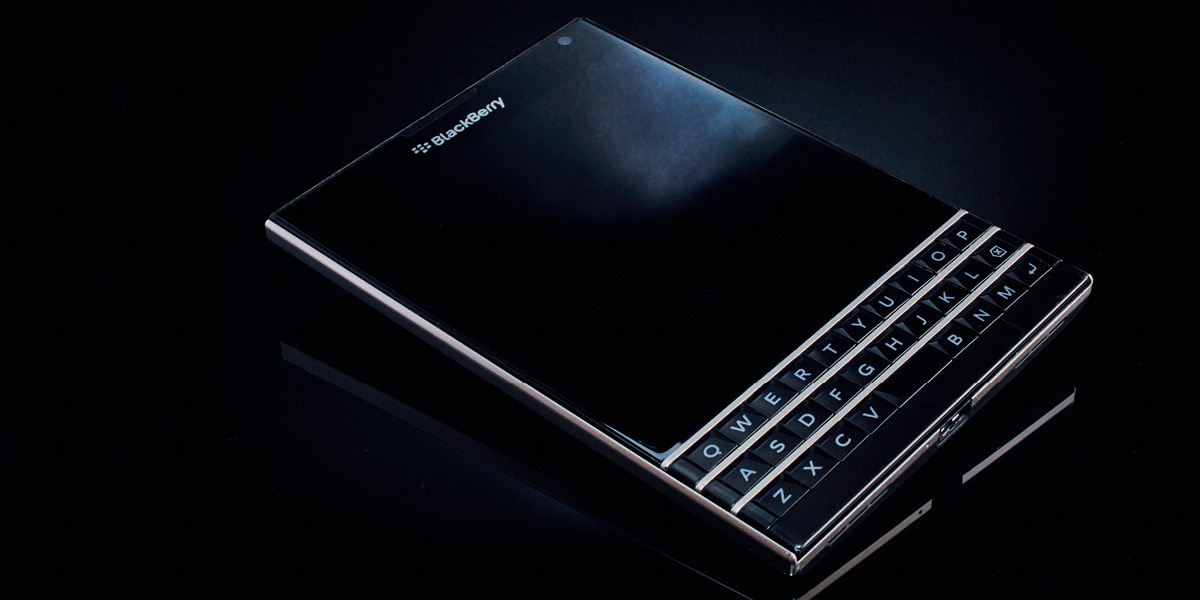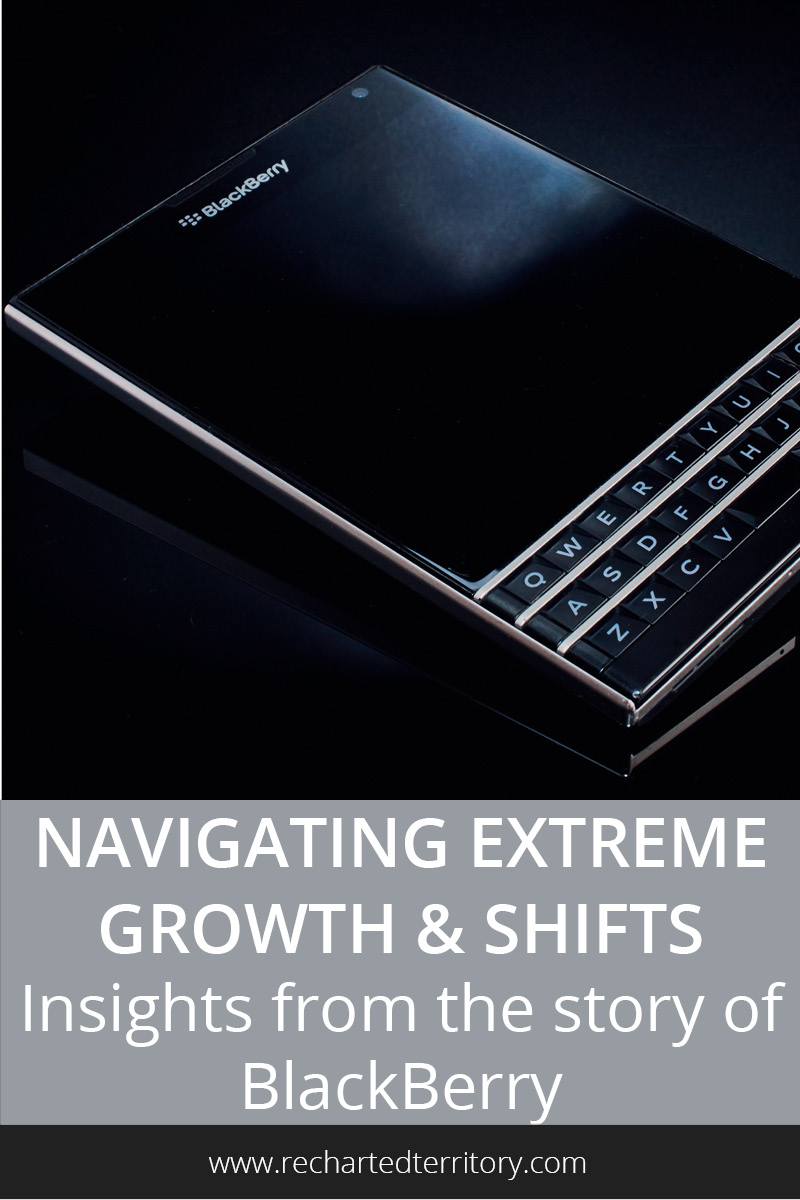

When we look at our own businesses, it’s easy to fall into information overload. You’re thinking about the details of your current to-do list, plus the pull of your vision mixed with nagging uncertainty. Juggling problems, possibilities, and team dynamics.
It can be difficult to see where your business needs to go. Yet somehow it’s easier to look at other companies objectively. Easier to spot patterns and identify what they need to tackle next. And then apply those insights to look at our own companies differently.
Jacquie McNish and Sean Silcoff wrote a compelling narrative in “Losing the Signal: The Untold Story Behind the Extraordinary Rise and Spectacular Fall of BlackBerry” about the path of Research In Motion (RIM) from its founding through 2013. Chronicling the journey from an insider perspective, the book provides an interesting case study of how an underdog can grow into a market leader selling a product with global appeal. It also offers a cautionary tale of what can happen if an organization is unprepared to pivot its portfolio from that winning product.
Here are a few insights inspired by the book, for companies managing their portfolio of products and business models:
Focus on the unique areas that your organization can address
Around the time RIM was thinking about wireless messaging, their competition was trying to figure out ways to duplicate the office desktop experience on a smaller device. However, the performance of these devices in the mid-1990s was slow and the user experience was clunky. RIM realized that users wanted convenience, not just another device. Being able to receive and send emails from anywhere would untether users from their desks and unlock new business opportunities for them. So RIM decided to design a device focused on wireless email, to provide the optimal experience. It was a simple, efficient way to fill a gap in the market. And it quickly became a hit because it addressed a specific use case that people cared about (and did it well).
Target or create evangelists for your products
To compete with the big players, RIM sales representatives would go straight for the early and influential adopters: senior legal and financial advisors and corporate executives. They would give people free phones to use during a trial run. Initially skeptical users quickly found themselves changing their behavior and becoming addicted to having constant access. Executives would experience the value first-hand and then want to purchase BlackBerrys for their assistants and direct reports. That cycle would continue until everyone in the enterprise owned one.
Be prepared for the landscape to entirely shift
RIM had examined the market in the 90s and 2000s and tested out what was important and possible for their end customers and the carriers they were partnering with. They had shaped some of the rules of the landscape themselves. That all shifted when Apple revealed their iPhone in 2007. With their agreement with Cingular, Apple changed the rules of what type of agreement was possible with carriers and what kinds of features customers would accept. Google also shifted the rules of the game when they licensed their Android operating software to Motorola. RIM found themselves struggling to respond to the new customer expectations and partner dynamics. Understand the current rules and try to bend them, but also expect the rules to change at some point, probably sooner than you would like.
Balance an entrepreneurial spirit with alignment as you grow
To keep up with the rapid growth of demand for BlackBerrys, RIM grew their organization as well. The problem was that they grew so quickly that processes and knowledge sharing weren’t growing at the same rate. The ad hoc innovation culture that worked when they were small no longer worked as the company grew larger. Yet they also didn’t have a clear strategy or accountability beyond their core successful product line. Therefore they weren’t able to innovative quickly or stay in sync. Which put them at a disadvantage to change direction when the pressure was highest.
Prepare to play in multiple games at once
One challenge RIM had was dealing simultaneously with the huge current demand of the global market, and the rapidly declining rate of growth in North America plus the rise of the smartphone market. They needed to both keep their eyes on the current business and prepare for the rapidly changing future. All on a short time frame. Working with these issues, plus other distractions, led to trouble balancing resources toward success in the current quarter versus the coming years. Factoring the short-term and long-term into your portfolio at all times can help deal with allocation decisions during the more stressful moments.
Factor in distractions
Unexpected distractions moved focus away from figuring out what to do next to compete in the market. Lawsuits and other issues took away CEO time and confidence from preparing a strategy. Distractions for executives are often unavoidable, but not having an innovation system that can survive them can leave your company vulnerable. Since the CEOs were wrapped up in those challenges, they weren’t able to guide the company in a different direction. And since their organizational model depended on the CEOs being high-touch, the business and product strategy suffered.
Keep leadership in sync
The two CEOs originally were great complements to each other and were able to take advantage of each other’s strengths. However, after multiple issues and a falling out, the co-CEOs were no longer acting as a unit, making internal and external decisions together. At that point, the out of sync two-headed structure ended up causing more problems, including siloes, distrust, overlapping roles, and strategic confusion that showed up in their products.
Start with the marketing plan, don’t end with it
As they struggled to respond to the iPhone, RIM ultimately lost focus on who their target customer was. Their BlackBerry product had succeeded because they targeted enterprises, and Pearl initially appealed to the consumer market. However, they tried to blend competitor’s features and their current capabilities, without a clear connection to the existing BlackBerry user base and ecosystem. After a rushed and less than successful Storm smartphone, they ended up launching the PlayBook tablet that didn’t work well for either consumers or enterprises. They struggled to create a marketing plan for a product as it was about to launch, instead of creating a product that fit the needs and use cases of a particular type of customer.
Obviously, hindsight is 20/20. We can draw conclusions based on what happened but making these tough calls in the moment is not straightforward. The future is uncertain. Everyone is placing bets, taking on losses, that will eventually translate into unknown gains and failures. Sometimes people make business or purchasing decisions that don’t seem logical. Luck and timing play a role. However, looking holistically, managing finances to handle losses, balancing the portfolio, and building an enterprise that can handle both flexibility and alignment can help you better navigate through the swells and storms of the real world marketplace.
Have you found other stories of companies that handled dramatic market shifts and portfolio pivots well? Ones that struggled?